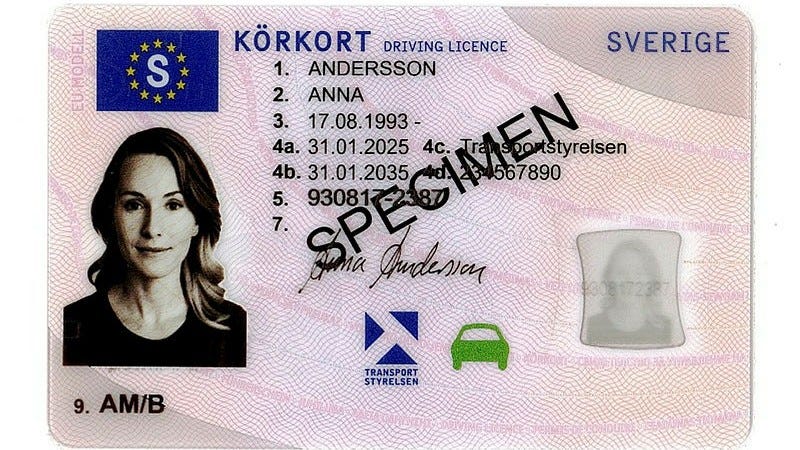The Swedish driving license is undergoing a significant redesign, its first update in over eight years. Slated to enter production in January 2025, the new license boasts a revamped aesthetic and enhanced security features, marking a departure from the familiar design carried by millions of Swedes. One of the most noticeable changes is the relocation of the alternating photo and personal identification number to the transparent window of the card. This shift not only modernizes the license’s appearance but also contributes to its improved security. The new design also incorporates several advanced security elements, a necessary upgrade given the near-decade since the last revision. These enhancements aim to combat counterfeiting and maintain the integrity of the Swedish driving license system. Existing licenses remain valid until their expiration date, ensuring a smooth transition to the new format without requiring immediate replacement.
The redesign initiative extends beyond the standard driving license to encompass a range of other permits and certifications. The taxi driver’s license, moped class II permit, ATV and snowmobile permits, ADR card (for the transport of dangerous goods by road), Certificate of Professional Competence (CPC) for drivers, and tachograph card for professional road transport are all being updated. This comprehensive approach ensures consistency and enhanced security across the spectrum of driving and transport-related documentation. The changes primarily focus on visual and security aspects, with no alterations to the underlying regulations governing these permits. Current holders of these documents need not take any action; their existing permits remain valid until their respective expiry dates.
A noteworthy aspect of this redesign is the use of an AI-generated image on the sample driving license. The pictured individual, ”Anna Andersson,” does not exist in reality. This innovative approach addresses the previous practice of using real individuals’ images, which posed potential privacy concerns. The switch to AI-generated imagery eliminates these concerns while providing a realistic representation of the new license design. Transportstyrelsen, the Swedish Transport Agency, explored the feasibility of utilizing AI-generated imagery and successfully implemented it, demonstrating a forward-thinking approach to document design and security.
The integration of advanced security features is a key element of the redesign. While specific details of these features remain undisclosed for security reasons, the overall objective is to make counterfeiting significantly more difficult. This commitment to security reinforces the credibility and trustworthiness of the Swedish driving license system. The nine-year gap since the last update underscores the importance of keeping pace with technological advancements in security measures. The revised design incorporates the latest technologies to protect against fraudulent activities and ensure the continued reliability of the driving license as a form of identification and proof of driving qualification.
The seamless transition process for existing license holders emphasizes the user-centric approach of this redesign. No immediate action is required from individuals holding current driving licenses. These licenses will continue to be accepted as valid until their expiration dates. This eliminates the need for a mass replacement program, minimizing disruption for citizens. The focus on practicality and ease of transition reflects the Transport Agency’s commitment to providing a smooth and efficient experience for license holders.
The comprehensive update of various permits and certifications demonstrates a holistic approach to document security and modernization. By simultaneously updating the driving license, taxi driver’s license, moped permit, ATV and snowmobile permits, ADR card, CPC, and tachograph card, the Transport Agency ensures a consistent level of security and a unified design language across all transport-related documentation. This comprehensive approach streamlines the process and reinforces the overall integrity of the system. The focus on keeping pace with technological advancements and prioritizing security underscores the importance placed on maintaining the reliability and trustworthiness of these official documents.














